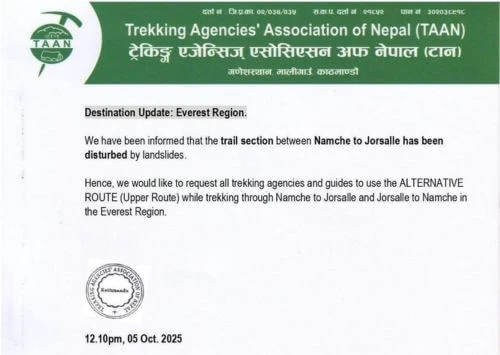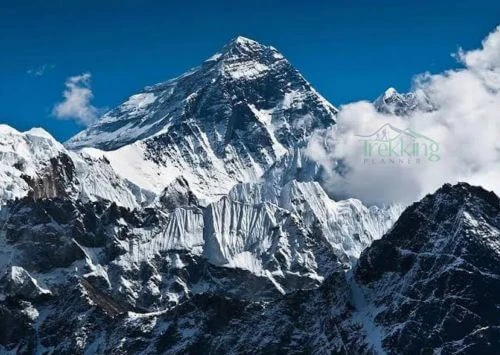What is Gai Jatra how it started and why do we celebrate Gai Jatra in Nepal?
Gai Jatra is a festival celebrated in Nepal, particularly in the Kathmandu Valley, in honor of those who have died during the year. The festival is also known as the "festival of cows" and is celebrated on the first day of the waning moon in the month of Bhadra (August/September) of the Nepali calendar.
Gai Jatra has its origins in ancient Hindu traditions and is believed to have been started by the king of Kathmandu, Pratap Malla, in the 17th century. According to legend, the king was mourning the death of his son and wanted to console his queen, who was overcome with grief. He ordered all the families who had lost a loved one during the year to join a procession and to parade a cow through the streets, believing that it would help the bereaved families come to terms with their loss.
Today, the festival has evolved into a colorful and lively celebration where people dress up in elaborate costumes and parade through the streets, often accompanied by music and dancing. The cow is still an important symbol of the festival, and families who have lost a loved one during the year will often lead a decorated cow through the streets in remembrance of their loved one.
The festival has also become a way for the Nepali people to come together and celebrate life, and it is common for people to play pranks, make jokes and tell stories during the festivities. It is believed that Gai Jatra helps to ease the sorrow of those who have lost loved ones, and it also provides an opportunity for the community to come together and support one another during difficult times.
History and beginning of Gai Jatra.
Gai Jatra is an annual festival celebrated in Nepal, particularly in the Kathmandu Valley. The festival has its origins in ancient Hindu traditions and is believed to have been started by the king of Kathmandu, Pratap Malla, in the 17th century.
According to legend, Pratap Malla was mourning the death of his son, and his queen was overcome with grief. The king, wanting to console her, ordered all the families who had lost a loved one during the year to join a procession and to parade a cow through the streets. The cow was believed to help the bereaved families come to terms with their loss, and it was also believed that the cow would guide the souls of the departed to the afterlife.
Over time, the festival has evolved into a celebration of life, and people now use it as an opportunity to remember and honor their loved ones who have passed away during the year. It is also a time for people to come together and support one another, and the festival has become an important part of Nepali culture.
Today, the festival is celebrated on the first day of the waning moon in the month of Bhadra (August/September) of the Nepali calendar. The cow is still an important symbol of the festival, and families who have lost a loved one during the year will often lead a decorated cow through the streets in remembrance of their loved one. The festival is also marked by music, dancing, and colorful costumes, and it is common for people to play pranks, make jokes, and tell stories during the festivities.
According to the Legend.
People waded through the mythical Baitarni River holding the tail of a cow to reach heaven. So, this festival celebrates death most beautifully in Nepal, as it has a long history. In the ancient days, the festival worshipped the lord of death, "Yama." During the medieval era, the celebration of this festival underwent a huge transformation.
In the 17th century, Nepal’s ruler, King Pratap Malla, is said to have invited people to march in costumes and perform stunts and plays in front of his palace to make his grief-stricken wife smile after the death of their son. In an attempt to please the queen of King Pratap Malla, who was devastated by the death of her young son, the festival emerged to become one of the most entertaining festivals in Kathmandu that blends the biggest tragedy of life, which is death, with unlimited humor and fun. As the procession began, somehow those who performed in front of the queen were able to show the queen that the pain of losing someone is not just felt by her but rather by others too.
That is why this festival started being celebrated from that moment on, as the queen realized that she was not the only one in agony over her son’s death; many others felt the pain just like she did. Hence, from that moment on, King Pratap Malla started the tradition of Gai Jatra. People from this era now celebrate it as satire and laugh at death, loss, and other sociopolitical issues.
How is Gai Jatra celebrated?
Gai Jatra is celebrated in Nepal, particularly in the Kathmandu Valley, with a range of rituals and activities. Here is a general overview of how the festival is celebrated:
Procession: A procession of decorated cows is led through the streets, along with dancers, musicians, and people dressed in costumes. Families who have lost a loved one during the year often lead a decorated cow in memory of their loved one.
- Satire: People often use Gai Jatra as an opportunity to make satirical statements about social and political issues. Satirical plays, songs, and skits are performed, often with political undertones.
- Pranks: It is also common for people to play pranks on each other during Gai Jatra. This is believed to help ease the sadness and grief associated with death, and it is seen as a way of celebrating life and finding joy even in difficult times.
- Feasting: The festival is also marked by feasting, and families often prepare special meals to share with their loved ones.
- Lighting lamps: In some communities, people light lamps at night to guide the souls of the departed to the afterlife.
In Hinduism, the cow is considered holy or sacred. Many Nepalese people use cow urine and dung for religious purposes, and cow slaughter is prohibited in the country. Boys in the procession also wear elaborate paper headdresses to impersonate cows, as well as white waistcloths and loose saffron vests. If families have lost a female member, the boys are dressed as girls in brocaded crimson blouses and saris. Relatives and friends offer milk, beaten rice, fruits, and sweets on leafy trays to the participants. During anarchy in Nepal, Gai Jatra offered freedom to satire against the government and bureaucrats. Gai Jatra is not just celebrated in one city but rather in four different cities, so it varies a bit in each city. Therefore, it is also considered to be one of the most celebrated festivals in Nepal.
Cities in Nepal that follow Gai Jatra.
Kathmandu.
From the perspective of historical importance, Gai Jatra is mainly celebrated in Kathmandu. The procession of cows that circles Kathmandu Valley commemorates a deceased family member from the previous year. King Pratap Malla asked to bring the cow procession before the sad queen. Then people tried their best with different costumes and humorous acts. The dance and procession finally gave the queen a smile on her face. The queen's smile was fleeting, but the procession brought her great relief. She knew that there had been several deaths in the city during the period, and she was not alone.
Death is a natural phenomenon, and no one has control over it. Every family who has lost someone in the previous year is required to participate in a procession through the streets of Kathmandu, led by a cow, as has been done since time immemorial. Cows have been replaced by dogs and cats as Nepal enters the developing era, and now young boys dress up as cows and parade through the streets, thereby helping the deceased find their niche in the afterlife.
Bhaktapur.
Gai Jatra is also performed in Bhaktapur. To the amusement of the people, Bhaktapur has a flavor all its own, vastly different from Kathmandu and Patan. Apart from family members roaming around as a cow to help their departed ones, the main attraction there in Bhaktapur is the traditional dance of this festival called "Ghentang ghisi." In two long lines, girls and boys face one another, striking each other’s sticks in the alternating slow and fast tempo of drummers, making an electrifying thud. It has been a while since girls too were allowed to participate in "Ghentang ghisi."
These days, one can see girls tapping their feet to the rhythm and a few of them beating traditional drums and clashing cymbals. The line is followed by bamboo structures covered with colorful cloth and painted pictures or clay molds of cows, symbolizing the dead. One can easily figure out whether it is for males or females. If the deceased is a male, then the tall erected bamboo is wrapped in plain white cloth, and Haku patasi (Newari traditional wear for women) is used to cover the bamboo for a woman. The line circumambulates the whole Bhaktapur Durbar Square, which ends with an elaborate bhoj (party).
Kirtipur.
In Kirtipur, Gai Jatra is celebrated uniquely. Families who have lost their loved ones participate in a procession for the whole day. People wear masks and colorful clothes in the procession. Similarly, some people, especially children, disguise themselves as cows and "Jogis." On the same occasion, the special dance that is named "Tir-Ku-Lar-Ku" in "Panga" and "Dhe-Dhe-Pa-Pa" is performed in Kirtipur.
Patan.
Patan is also one of the cities where Gai Jatra is performed and celebrated. It seems that this festival is the place to vent out all the humorous fillings inside one’s head. Crowds gather on the temple steps and in the balconies and at the windows of the houses, passed by the procession in their well-calculated route, to watch outrageously garbed citizens blatantly burlesquing Nepalese institutions, social and religious customs, the government, and sometimes the gods themselves.
Somehow, it’s more colorful and extravagant than Kathmandu. The crowd is at its highest during the celebration of this festival. The moment they parade with bands, often under the influence of home-brewed libations, to clown before the waiting crowds are one of the special moments during this whole procession, as it’s a way of celebrating the Gai Jatra by the people from Patan.
Conclusion.
Hence, the present form of Gai Jatra is a happy blending of antiquity and medievalism, as it enables people to accept the reality of death and prepare themselves for life after death. There’s even a saying in Hinduism: "Whatever a man does in his life is to prepare himself for the life that lies ahead of him after death."





